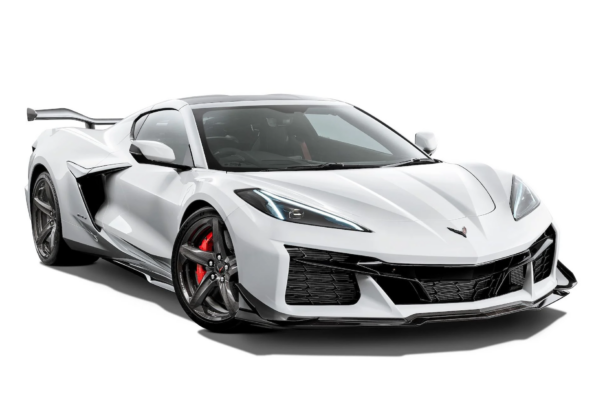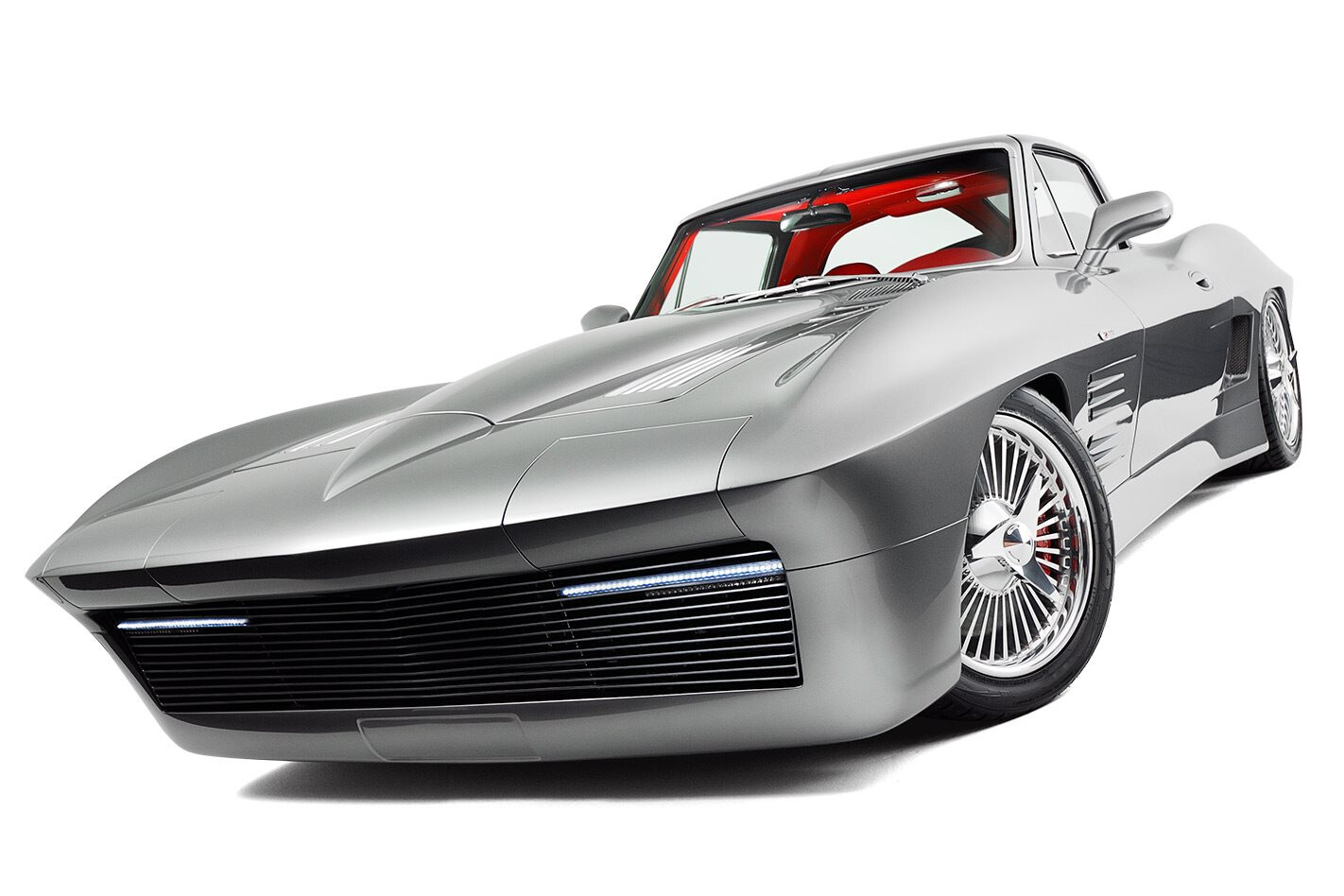The boys from Harrop have the ultimate business card in the shape of a hand-tuned Corvette
This article was originally published in the first issue of Street Machine’s LSX Tuner magazine, 2014
THE MAN known as the Father of the Corvette, Belgian-born engineer Zora-Arkus Duntov, wanted General Motors’ flagship sports car to be a fine-handling high-performance machine equal to any from the old countries. It wasn’t until the C6 Z06 in 2006, however, that we finally got a ’Vette which had the potential to blow away the Eurotrash on racetracks.
The engineers had performed extensive work to lighten the body panels, reduce unsprung mass and improve the aerodynamics at high speed. GM also stuffed it chock-full of horsepower with one of the wildest factory engines they’d ever offered in a production car: the LS7.
Australia’s Harrop Engineering has spent half a century turning Holden sedans into track-day maulers. But they knew our 1800kg 400hp four-doors couldn’t hold a candle to a 1400kg 500hp Z06, so they purchased this 2010 model and had it shipped over.
Their goal was to build a lightweight circuit hot rod to take on the world’s best and realise Duntov’s dream.
Now, the standard LS7 is a real piece of work. Dry sumped and using exotic titanium in its valve-train and short motor, the hand-built 427-cube small-block is almost an LS engine in name only. The 104.7mm by 101.6mm bore and stroke is larger than any other LS motor, meaning there is no room for cooling passages between the cylinders.
Lightweight Forgeline GA1R wheels are super-high quality Monoblocs made from single billets of high-quality metal. They’re strong and very light. Just what you need for racetrack performance
It also requires pressed-in flange-top sleeves to maintain block rigidity, especially as the deep-breathing motor can spin up to 8000rpm!
Harrop decided this wasn’t enough and fitted a Callies Dragon Slayer crank, Diamond pistons and Compstar rods, pushing the capacity to 440 cubes. The cam is an LPE 384/390 112 GT21, while the ported heads sport Ferrea valves and LPE dual springs.
Feature: Blown & injected 2012 Camaro SS
Harrop fits a large front splitter and a gigantic GT3-style wing for the track, but takes them off away from it. They’re easy to damage and detract from the lines
Sitting up top of the big-inch small-block is a Harrop Hurricane throttle-body manifold, kitted out with Deatschwerks 60lb/hr injectors managed by a flash-tuned standard Delco ECU. Finishing touches to the 710hp monster include a custom radiator from Adrad and American Racing headers.
Though the standard six-speed Tremec gearbox remains in place, an Eaton Positraction limited-slip diff handles the strain down back, metering out the torque to keep the Chevy flying out of turns.
It works with the heavily revised suspension Harrop put together in conjunction with a bunch of experienced US-based ’Vette tuners. Pfadt Race Engineering provided upgraded swaybars, along with new suspension bushes to eradicate any slop. They’re matched to composite springs and dampers from popular American pro touring shop JRI, which also dropped the ride height.
Not many Aussies understand the late-model Corvette’s transverse-leaf rear suspension. They hear ‘leaf’ and assume there is a pair of parallel cart springs holding the tail off the ground, which couldn’t be further from the real way in which they work. The Corvette’s leaf acts more like a swaybar running across the rear of the suspension cradle to tie it together laterally, rather than merely locate the diff and rear axle.
Harrop have an excellent range of aftermarket big-brake options in their catalogue and went for broke on their promo car with the Titanium Ultimate kit front and rear. This comprises 381mm and 356mm rotors, with six and four-piston calipers, respectively.
They hide behind some truly sexy wheels, in the form of Forgeline GA1Rs spanning 18×11 inches at the turnin’ end and gargantuan 19×13 on the burnin’ end. They’re wrapped in super sticky, hyper expensive 315/30-18 and 345/25-19 Michelin PS2 rubber.
If there’s one area that Chevrolet let the Z06 slide, it’s the cabin. Cheap and nasty plastics and switchgear abound, showing why it was half to one-third the price of its European and Japanese competition.
In this case, Harrop added Velo race seats and harnesses, as well as a bolt-in BrownDavis rollcage.
So how did it go?
At the World Time Attack Challenge at Sydney Motorsport Park in 2012, the Corvette took on a field of the hardest and fastest tuned race cars in the world and matched them lap for lap. Not only that, it was both the fastest normally-aspirated car, the fastest V8 and the fourth fastest car outright. And that was when the car was still running the stock LS7 long motor, with just cam, intake and cat-back exhaust. And the car was running Michelin Pilot Sport Cup 2 street rubber, instead of R-compound semi-slicks.
Mission accomplished. Zora-Arkus Duntov would be chuffed.
The King Shall Rise
The seventh-generation Corvette, known as the C7, was released at the Detroit Motor Show in January 2013 to worldwide fascination. It heralded the coming of the new 340kW (450hp) direct-injection, variable-valve-timed 6.2-litre Gen V small-block V8, codenamed LT1.
It was cool, but the hot news came a year later with the C7 Z06 model. Gone is the naturally-aspirated 427 LS7, replaced with a 466kW (625hp) supercharged 6.2-litre variant of the LT1 called the LT4. Like the LT1 it shares its basic architecture with the LS series, but the new Z06 runs lower static compression to handle the supercharger’s boost, as well as a variable displacement oil pump and piston-cooling oil squirters. The blower is a 1.7-litre Eaton R1740 TVS unit, smaller than the LSA’s 1.9-litre or the LS9’s 2.3-litre Eatons.
There is the choice of a seven-speed manual with rev-matching technology or an eight-speed 8L90 auto, now fitted with paddle shifters for the full Grand Turismo experience. Down the back, there’s an electronically controlled LSD, which could turn the C7 Z06 into a real drift pig if it works the same as the slide-happy units fitted to BMW’s M cars and Ferrari’s 458.
Guards are pushed out by 56mm (front) and 80mm (rear), covering massive 285-width tyres on 19x10in front wheels and 335s on 20x12in rims at the rear. A ‘Z07 Performance Package’ gives buyers even stickier rubber, more aero and bigger brakes, moving to 394mm/388mm carbon-ceramic rotors from the stock Z06’s 371mm/365mm steelies.
It is claimed to be the fastest, most powerful General Motors car ever built, as you’d expect.
HARROP ENGINEERING
2010 CHEVROLET CORVETTE Z06
ENGINE
Type: LS7 427ci V8
Crank: Callies Dragon Slayer
Pistons: Diamond
Con rods: Compstar
Capacity: 440ci/7.2-litre
Cam: LPE GT21 384/390 112
Heads: Ported LS7
BENEATH
Diff: Eaton Posi limited-slip centre
Suspension: JRI composite springs, JRI dampers
Bushings: Pfadt Race Engineering
Swaybars: Pfadt Race Engineering
Brakes: Harrop Titanium Ultimate brake kit, 381mm rotors and six-piston calipers (f), 356mm rotors with four-piston calipers (r.)
ROLL
Wheels: 18×11-inch Forgeline GA1R Monobloc (f), 19×13-inch Forgeline GA1R Monobloc (r)
Tyres: 315/30-18 Michelin PS2 (f), 345/25-19 Michelin PS2 (r)




Comments